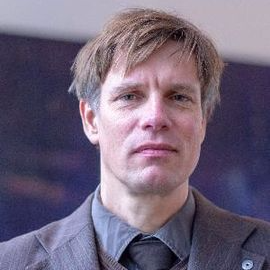Airborne Wind Energy Systems
A special issue of Energies (ISSN 1996-1073). This special issue belongs to the section "A3: Wind, Wave and Tidal Energy".
Deadline for manuscript submissions: closed (31 January 2023) | Viewed by 60564
Special Issue Editors
Interests: modeling; control; efficiency enhancements; fault detection and condition monitoring of mechatronic and renewable energy systems
Special Issues, Collections and Topics in MDPI journals
Interests: airborne wind energy; fluid–structure interaction; two-phase flows; liquid droplet; modeling; renewable energy technologies; numerical analysis; power generation; engineering thermodynamics; computational fluid dynamics; fluid mechanics; numerical simulation; thermal engineering; numerical modeling; aerodynamics
Special Issue Information
Dear colleagues,
Airborne wind energy (AWE) systems convert wind energy into electrical energy using autonomous tethered flying devices. Deemed a potentially game-changing solution to clean and sustainable energy generation, AWE is increasingly attracting the attention of governments, policymakers and industry worldwide. AWE technology can significantly reduce the levelized cost of energy (LCoE) by eliminating (i) the drive-train installation, (ii) a large part of the rotor blades, (iii) the tower, and (iv) the foundation, which make up for about 50% of the conventional turbine costs. On the other hand, the development of this technology is also facing substantial technical challenges. Important aspects are, for example, autonomous, efficient, reliable, safe, and uninterrupted operation of AWE systems and their interconnection with the future power grid.
We cordially invite original manuscripts presenting recent advances in this important and interdisciplinary research field with particular focus on but not limited to the following:
- Aerodynamics, aeroelasticity, and structural dynamics;
- Flight dynamic modeling;
- Flightpath planning and control of AWE systems;
- AWE design optimization;
- Higher altitude wind resources;
- Experimental testing of prototypes;
- Efficiency enhancements (by, e.g., intelligent design and/or control);
- Nonlinear, optimal, and fault-tolerant control strategies;
- Fault detection methods and condition monitoring approaches;
- Robust, fault-tolerant and flexible grid connection/integration (e.g., grid-supporting, -feeding, -forming including black start capability);
- Economic and market analysis;
- AWE policy-making, environmental impact, and societal acceptance.
The Special Issue will present cutting-edge research results connected to AWE technology as a basis for enduring operation. All research results must be presented in a mathematically thorough (e.g., in state space) but understandable manner to encourage insights and re-implementation by the readers so that the knowledge basis is shared, spread, and extended to promote AWE systems to the market. All results should be validated by simulation and measurement results (if possible).
Prof. Dr. Christoph M. Hackl
Dr. Roland Schmehl
Guest Editors
Manuscript Submission Information
Manuscripts should be submitted online at www.mdpi.com by registering and logging in to this website. Once you are registered, click here to go to the submission form. Manuscripts can be submitted until the deadline. All submissions that pass pre-check are peer-reviewed. Accepted papers will be published continuously in the journal (as soon as accepted) and will be listed together on the special issue website. Research articles, review articles as well as short communications are invited. For planned papers, a title and short abstract (about 100 words) can be sent to the Editorial Office for announcement on this website.
Submitted manuscripts should not have been published previously, nor be under consideration for publication elsewhere (except conference proceedings papers). All manuscripts are thoroughly refereed through a single-blind peer-review process. A guide for authors and other relevant information for submission of manuscripts is available on the Instructions for Authors page. Energies is an international peer-reviewed open access semimonthly journal published by MDPI.
Please visit the Instructions for Authors page before submitting a manuscript. The Article Processing Charge (APC) for publication in this open access journal is 2600 CHF (Swiss Francs). Submitted papers should be well formatted and use good English. Authors may use MDPI's English editing service prior to publication or during author revisions.
Keywords
- airborne wind energy system
- aerodynamics
- aeroelasticity
- dynamic modeling
- performance modeling
- fault-tolerance
- reliable operation
- safety engineering
- flexible grid connection






